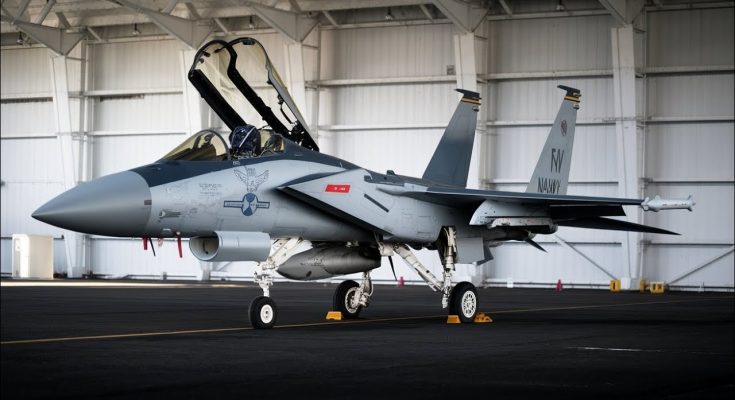2026 McDonnell Douglas F-15 Eagle – The 7th-Gen Evolution of an Icon
The McDonnell Douglas F-15 Eagle, a legendary air superiority fighter that has been a cornerstone of the U.S. Air Force since the 1970s, is entering an exciting new phase of its legacy. With the 2026 F-15 Eagle model, this iconic aircraft is evolving into a 7th-generation fighter, combining over 50 years of combat experience with cutting-edge technologies to meet the challenges of future warfare. This new iteration represents a major leap forward, blending the unmatched reliability and combat prowess of the original F-15 with next-gen innovations in stealth, automation, and avionics.
A Legacy of Air Superiority
Since its debut in 1976, the F-15 has been one of the most successful fighter aircraft in history. Known for its speed, maneuverability, and lethal air-to-air capabilities, the F-15 has served in a variety of roles and conflicts, accumulating an enviable combat record. The aircraft’s design has always focused on achieving air superiority, with a powerful radar system and the ability to carry a wide range of air-to-air and air-to-ground munitions.
Over the years, the F-15 underwent multiple upgrades, including the F-15E Strike Eagle variant, which enhanced its multirole capabilities. However, the 2026 F-15 is a completely reimagined version, representing the next evolutionary step in the platform’s storied history.
7th-Generation Enhancements: Stealth, Speed, and Sensor Fusion
The 2026 F-15 Eagle marks a monumental shift as it integrates 7th-generation fighter technologies, positioning it among the most advanced aircraft in the world. One of the most notable changes is the aircraft’s stealth enhancements. While the F-15 was never designed to be a stealth fighter, the new model incorporates low observable technologies such as radar-absorbing materials, advanced coatings, and redesigned airframe contours to reduce radar cross-section. These updates enable the F-15 to operate in contested environments without sacrificing its signature performance.
In addition to stealth, the F-15’s sensor fusion capabilities have been significantly upgraded. The aircraft will now feature a next-generation radar system that offers superior detection and tracking capabilities, along with enhanced electronic warfare systems to jam and spoof enemy radar. This will allow the F-15 to track targets at much greater distances, making it a formidable threat in air-to-air and air-to-ground engagements.
Moreover, AI-powered avionics will be integrated into the F-15, enabling real-time analysis of the combat environment and autonomous mission planning. These AI systems will help the pilot make faster decisions and optimize weapon targeting, giving the aircraft a strategic advantage. This enhanced situational awareness will make the F-15 even more lethal and survivable, particularly in highly complex combat scenarios.
Autonomous Capabilities and Multirole Versatility
The 2026 F-15 will also feature a degree of autonomy, allowing it to operate in either manned or unmanned configurations. When piloted, the aircraft will be more intuitive and responsive, aided by an advanced pilot interface that integrates voice commands and neural inputs. In unmanned mode, the F-15 can be remotely controlled or operate autonomously, capable of teaming with other aircraft and drones for coordinated strikes or missions in contested airspaces.
Additionally, the F-15’s multirole versatility will be enhanced with the integration of modern weapons systems. With the ability to carry a wide range of precision-guided munitions, including advanced air-to-air missiles, hypersonic weapons, and advanced bombs, the 2026 model will excel in both air superiority and strike missions, making it a true all-weather, all-environment combat platform.
Future-Proofing for the Battlefield
The 2026 F-15 Eagle is designed with future-proofing in mind. The aircraft’s open-architecture system ensures that it can be easily upgraded with new technologies as they become available, ensuring its relevance in future conflicts. This adaptability allows the F-15 to remain a formidable presence in the sky for decades to come, maintaining its status as a key component of the U.S. Air Force and allied forces worldwide.
Shocking the Competition
The F-15’s transformation into a 7th-generation fighter will not only shock its rivals but could also change the balance of power in global air combat. By combining the traditional strengths of the F-15 with next-gen stealth, avionics, and automation, the 2026 model will offer unmatched flexibility and lethality. While aircraft like the F-22 Raptor and F-35 have garnered attention for their own advancements, the new F-15 will offer a cost-effective, yet highly capable alternative that continues to evolve alongside emerging threats and technologies.
Conclusion
The 2026 McDonnell Douglas F-15 Eagle is poised to redefine the concept of air superiority for the next generation. By blending its unmatched legacy with cutting-edge advancements in stealth, sensor fusion, and autonomy, this 7th-gen F-15 will be a force to be reckoned with in future aerial combat. As military forces around the world continue to modernize their fleets, the F-15 will remain an enduring symbol of innovation, adaptability, and the unyielding quest for air dominance.



